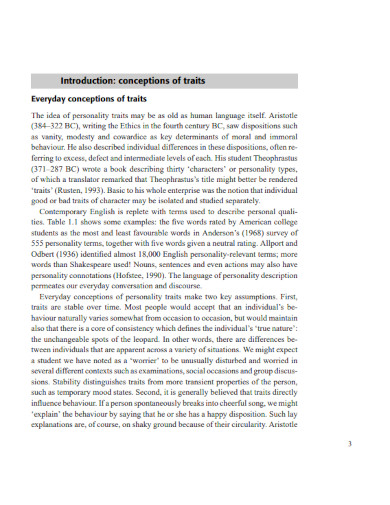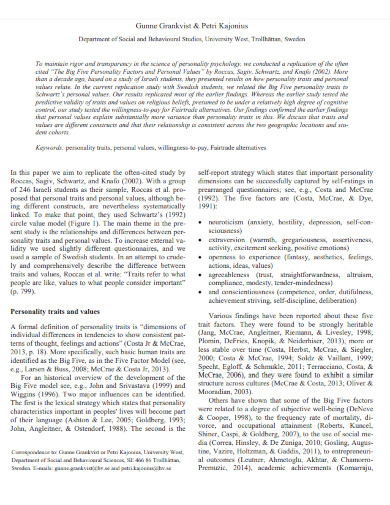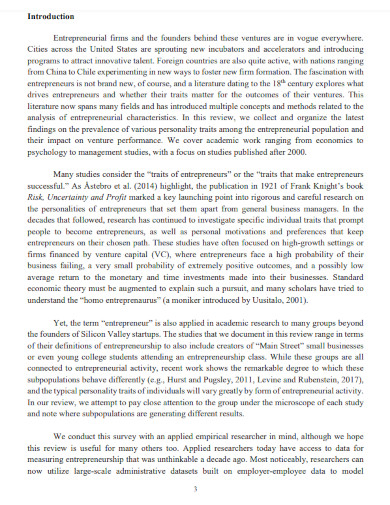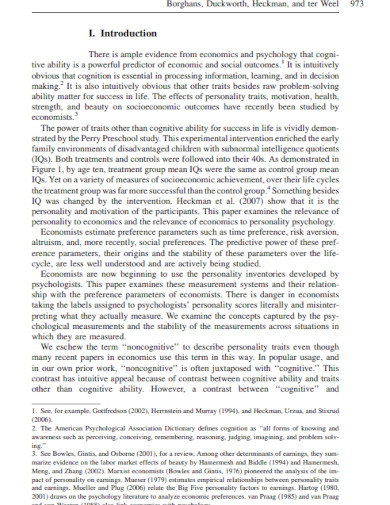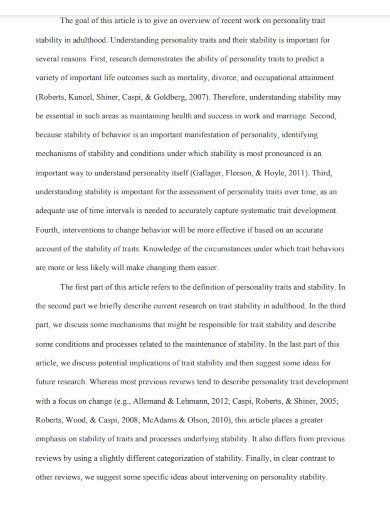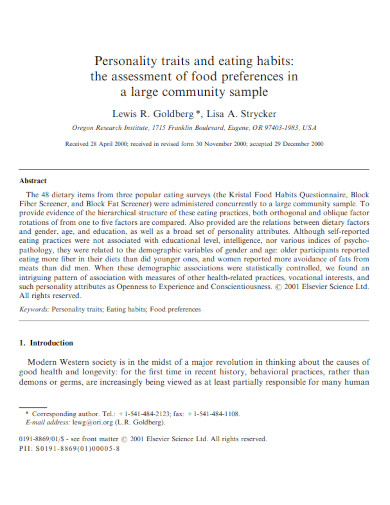6+ Personality Traits Examples to Download
When people tell you that you have such a positive trait, or you see the world in a different light, you may either see this as a compliment or something different. A trait that you carried with you even as a child. This trait when it is consistent is considered a personality trait.
Personality Traits Template
Personality Traits and values
Personality Traits of Entrepreneurs Example
Economics and Psychology of Personality Traits
Stability of Personality Traits in Adulthood
Personality Traits and Eating Habits
Gender Differences in Personality Traits Across Cultures
What Are Personality Traits?
Personality traits are defined as behaviors that people subconsciously display. These behaviors, feelings, thoughts or patterns can come from different sources. Either in a natural sense or through the experiences of a person. The experiences of a person can also affect their personality trait, as well as how they were raised.
How Do You Characterize Personality Traits
There are a lot of ways you can characterize your personality traits. But the most common ones are often only three or four. However, depending on how you may see a personality trait, characterizing it can sometimes lead you to more ways than the general three or four. Here are the four basic steps to characterizing your personality traits.
Step 1: Through a Person’s Culture and Beliefs
A person’s culture and beliefs can be one of the biggest impact on how a person’s personality trait will be like. How a person grows up and what beliefs system they are given will affect how they see and how they react to others. However, culture and belief is not the only thing you can use to characterize a personality trait. Society can also bring a huge impact.
Step 2: Consistency and Behavior of the Person
Consistency also plays a big role in shaping a person’s personality traits as well as their behavior. How consistent a person’s behavior is and how well they respond to it will also help in determining the personality trait of a person. How they react well to situations and how consistent their reactions and behaviors are.
Step 3: Understanding Personal Differences
Being able to understand the different personality traits a person has and accepting it is a rare trait that not many have these days. When a person sees how different someone else’s traits are and accepts that it is not how they define themselves, it is a wonderful trait to have.
Step 4: A Positive Stability on a Personal Trait
In order to get a positive stability on someone’s personal trait, they must first take notice of what these are and list them down. There are a lot of positive stability tests that you can use to determine whether or not these traits do fall under good stability or not.
FAQs
What are the common personality traits?
The common personality traits you can have as a person are: ambitious, creative, confident, courageous, disciplined, flexible, friendly, honest, insightful, loyal, patient, respectful, truthful, thorough, understanding. There are a lot of personality traits that a person can have. Some can be seen as positive, negative, or a bit of both. These traits stem from environment, behavior, situation, and culture.
How can a personality trait be of use?
A person has their own good and bad personality trait that is borne into them or has been shaped from the situation they are in. These personality traits help in understanding what a person is and how it defines them. Personality traits are used as a way to see how a person would be like when they are placed in uncommon situations. These traits can either be seen as helpful or can be seen as something worth questioning.
What are the five personality trait models?
The five personality trait models are Openness, Conscientiousness, Extraversion, Agreeableness, and Neuroticism. All of which can be shortened as O.C.E.A.N. These personality trait models help in dividing what type of personality trait falls under the correct category.
There are a lot of different kinds of personality traits. People may see them as positive or negative. These traits are either borne from situations that help or shape us. These traits can also be based on the culture and beliefs that we grew up in. While some are traits we got from our environment. Regardless of where these traits may come from, there is no denying that these traits can either define us as a person or can help shape us as the people we are today.



